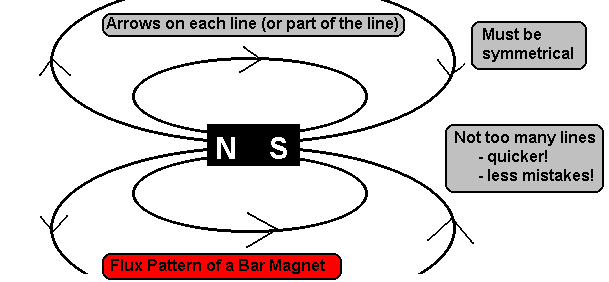Magnetism
00.26
Diposting oleh Melany Christy
(Also see Electromagnetism )
A magnet has two poles - the NORTH pole and the SOUTH pole. If freely suspended it will orientate itself so that the end called the North Pole points north. This is why it is called the North Pole - it seeks out the north. See the Earth's Magnetic field
There are three magnetic elements: iron, nickel and cobalt. Only these and their alloys (mixtures of metals containing them) will be attracted to a magnet... all other metals will not.
The Domain Theory tries to explain why metals get magnetised. The magnetic elements have little molecular magnets inside them. These are randomly orientated in an unmagnetized piece of metal but point in a particular direction in a magnetised piece.

Soft magnetic materials (e.g. iron) have domains that easily move into line when the metal is placed in a magnetic field but as soon as the field is removed the domains take on a random pattern again. It returns to being unmagnetized straight away.
Hard magnetic materials (e.g. steel) have domains that do not easily move into line when the metal is placed in a magnetic field, a strong field is needed for some time, but then, when the field is removed the domains retain the magnetic pattern. The metal stays magnetic for a long time.
The Compass
The date the compass was first invented is unknown. The ancient Greeks knew about the attractive properties of magnetism and it is thought that the Chinese were aware that you could magnetise an iron bar by stroking it with lodestone (also spelt 'loadstone' ) as long as 2000 years ago. Lodestone is a naturally occurring magnetic rock, a magnetic oxide of iron. The word 'lode' means 'way', so a lodestone is literally a 'way stone' as it shows you the way. By the tenth century, the idea of using iron magnetised in this way to determine direction had been brought to Europe, probably from China, by Arab traders. By the 12th century very simple compasses were in use in the Mediterranean and despite the fact that the magnetic compass was in general use in the Middle Ages, little was known about precisely how it worked. See the article on the Compass from the National Maritime Museum
A compass has a freely suspended magnet, shaped like an arrow, positioned in a case. The point of the arrow is the North Pole and will point north unless a strong magnetic field is overpowering the earth's field.
If you put a magnet near a compass the arrow will point towards the magnet's South Pole. This is because:-
LIKE poles REPEL
and
OPPOSITE poles ATTRACT
You can use tiny compasses (plotting compasses) to plot out field lines of a magnet. The arrow of the little compasses are arranged tip to tail and the flux (or field) line direction is then given by the arrow head direction (North to South)

The closer the lines are drawn to each other (the more densely packed the line pattern) the stronger the field.
Always include an arrow on each line (N to S) or part of a line you draw.
Field lines never cross (special care is needed in diagrams!I). They start at a North pole and end on a South pole or form a complete loop - they have no breaks or gaps

Click here for an interactive demonstration of iron filings around a magnet and here for the field lines when two or more magnets are used.
Making magnets
- The stroking method: Use a permanent magnet and stroke a piece of steel (must be hard - you want it to stay a magnet) with a wide circular action many times in the same direction. This causes the domains to line up. Each stroke lines up domains. Once they are all lined up the magnet is at maximum strength.
- Using a solenoid: Put the steel (must be magnetically hard - you want it to stay a magnet!!) rod inside a solenoid. Pass a d.c. current through the coil for a period of time. The longer the time, the higher the current and the more turns on the solenoid the quicker your magnet will be made. Once all of the domains are lined up the magnet will be at maximum strength.
Destroying magnets
- Bash, drop or hammer the magnet.This gives energy to the domains and lets them reorientate themselves intorandom directions again.
- Heat it.Again, this gives energy to the domains and lets them reorientate themselves intorandom directions again.
- Use a solenoid. Put the magnet inside a solenoid (a long coil wire). Pass an AC current through the coil for a period of time. The longer the time, the higher the current and the more turns on the solenoid the quicker your magnet will be demagnetised.The AC supply voltage repeatedly pulls the domains into opposing directions. This results in them getting disorientated and all pointing in random directions again.
Posting Komentar